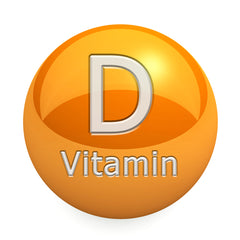
by Linda Lizotte, R.D.
Some of you reading this are lucky enough to see the sun 80-90% of the year. The rest of you are saying “I wish”. AMG Naturally Inc. is located in CT. The northeast has seen very little sun since last summer. Many of you are saying, “I know”. The purpose of this newsletter is to educate you on Do’s and Don’ts of protecting your skin when being excessively exposed to the sun. Yes, I said excessively. That is part of the controversy. As well, we will analyze the label on a sunscreen lotion to help teach you how to read labels on beautyceutical products, as the AMG Newsletter aims to do over time. Stay tuned each month and I promise you will learn a great deal that will help you make better purchasing decisions in order to protect the health of you and your family. I ask that you recommend to others an AMG Newsletter subscription so we can spread the word of health far and wide. After all, no matter the age, we all want to Age More Gracefully.
As the center of our solar system, the sun gives us warmth, energy, vibrancy (AMG logo was designed to depict this), photosynthesis and the ability to synthesize vitamin D through our skin. Without photosynthesis, we wouldn't have green plants, which means, AMG would not have nutrient-rich Moringa oleifeira leaf nor Sacha inchi from the Peruvian rainforest that are the superstar ingredients of our anti-aging cosmetic line.
Vitamin D protects us from cancer, including skin cancer.

It protects us from cardiovascular disease, diabetes (There are vitamin D receptors on the beta cells of the pancreas where insulin is made.), osteoporosis and lots more. In order to produce adequate amounts of vitamin D, 6% of your skin must be exposed to the sun for 20-30 minutes. It would be difficult and rare to get sunburn in 20 minutes. For this reason, I do not recommend putting on sun-block at home before you leave the house. Here are my recommendations in order: 1. Spray on the mineral rich Hydrating Spray Mist and Toner to balance pH and reduce pores. 2. Spread evenly over your face the AMG Daily Moisturizer. 3. Spread a small amount of AMG Elixir oil on your face to make your face more resilient to the effects of the sun’s potent rays.
I believe we should make our skin as healthy as possible so that outside assaults don’t affect us so badly i.e. UV irradiation. Researchers refer to this as photodamage.
Are the sun all-bad the way we are taught to believe? Are cholesterol all-bad the way we have been taught to believe? Do people who work outdoors have a higher incidence of skin cancer? Do people with high cholesterol levels always die of a heart attack or have a higher incidence? People with low cholesterol levels have heart attacks too. Why do people get skin cancer removed from places that never see the sun? The human body is very complex. Finding the cause is never so simple, yet necessary.
Everything in the human body serves a purpose including the appendix.
Here is a quote from researchers at Duke University Medical Center: “The function of the frequently discarded appendix, an organ often credited with little importance and often dismissed as having no significant function, does seem to have a role to play after all.” Simply put, the appendix stores probiotics, good bacteria, which aid digestion and immune function. When your gut needs more, (antibiotic use, etc.) the appendix has plenty in store.
So, with all this said. Should we use sunscreen? Probably, but not so fast! Why don’t we scrutinize our sunscreen ingredients as we do the food we eat or what we give to and put on our babies? And why would we want sunscreen in our cosmetics? Just to save us a step? Don’t we want our skin to be exposed to the sun long enough to synthesize one of the most important vitamins, vitamin D? Don’t we want to absorb all the protective antioxidants in our cosmetics before applying sunscreen? How will our body do this when sunscreen is meant to seal the skin like putting a Band-Aid on it? Would you wrap your liver in plastic?
Doesn't it make sense that chemicals age us faster? Both chemicals inside the body and chemicals placed on the body absolutely age us faster and contribute to health problems. The next part of this newsletter will discuss some of the many chemicals commonly used in sunscreen products in order to block UVA/UVB radiation from burning our skin, contributing to wrinkles and loss of collagen. We have all heard that frequent sunburns increase our risk of skin cancer, the worst being deadly melanoma. Are we sure that some of these chemicals or combinations of cosmetic and sunscreen chemicals are not increasing a risk of skin cancer and possibly a contributing cause? Many of them are more toxic when they are exposed to sunlight. I find that a bit strange.
Chemical sunscreens are approved by the FDA, however, there is a better way to achieve the same results. Just because something works, doesn’t mean it’s the best way to do it. So, let’s start by analyzing the three chemical sunscreens added to an organic sunscreen product. Here is the full ingredient list:
Active Ingredients:
Avobenzone (Sunscreen) 3.0%
Octinoxate (Sunscreen) 7.5%
Octocrylene (Sunscreen) 10.0%
Inactive Ingredients:
Alcohol (ORGANIC), Algae (ORGANIC) Extract, Aloe Barbadensis (ORGANIC) Leaf Extract, Cucumis Sativus (ORGANIC Cucumber) Fruit Extract, Fragaria Vesca (ORGANIC Strawberry) Fruit Extract, Glycerin (ORGANIC), VA/Butyl Maleate/Isobornyl Acrylate Copolymer, Water.
Organic Ingredients in this product include:
- Alcohol
- Algae Extract
- Aloe
- Glycerin
- Cucumber Fruit Extract
- Strawberry Fruit Extract
I can see growing strawberries and cucumbers organically but organic alcohol? organic algae? organic glycerin?

Coconut trees naturally produce their own SPF
Plants synthesize their own SPFs to protect themselves
Interestingly, many plants synthesize their own SPFs to protect themselves from the sun. Had this company chose higher SPF plants, it would not need to include 20% synthetic chemical, toxic sunscreens.
The highest percentage chemical filter in this product is Octocrylene (sunscreen ingredient) at 10.0%. Octocrylene is known to cause allergic skin reactions. If your skin gets red and bumpy and itchy after applying sunscreens, this ingredient may likely be the culprit. A bigger concern is that it interferes with cellular signaling which may lead to:
- Mutations
- Cell death
 Cell Mutation
Cell Mutation
Most common sunscreen ingredients and their dangers...
- Octocrylene: Octocrylene is implicated in cardiovascular disease. Researchers hired by the European Union (EU) were concerned about it enough to ban its use in cosmetics. It is also banned in Japan. Parabens and phthalates, synthetic chemical cosmetic preservatives, are banned in Japan and the EU but yet are commonly found in U.S. cosmetics including anti-aging lotions and serums.
- Octinoxate: The second highest percentage chemical filter in this product is Octinoxate at 7.5%. Although it is found in 90% of sunscreens, we should avoid this one the most. Why?Not only can it turn extremely toxic when exposed to sunlight but it also is an endocrine disruptor. It has an estrogenic effect and therefore can contribute to breast cancer and other female cancers.
IF YOU KNOW ANYONE THAT HAS BEEN DIAGNOSED WITH BREAST CANCER, PLEASE SEND THEM THIS NEWSLETTER.
- Avobenzone: The third highest percentage chemical filter in this product is avobenzone. Avobenzone is also known as Butyl Methoxydibenzoylmethane (does it sound sexy to you?). Avobenzone significantly degrades in light over time, lessening its sun protection capabilities. For this reason, it was combined in this particular sun lotion along with octocrylene which is a photo-stabilizing ingredient. Its ability to absorb ultraviolet light over a wider range of wavelengths than many other sunscreen agents has led to its use in many commercial preparations marketed as "broad spectrum" sunscreens.
Avobenzone appears to be relatively non-toxic and non-irritating to the skin. However, when combined with photo-stabilizers (such as octocrylene as mentioned above), there is a greater risk for skin irritation and low-level toxicity. Furthermore, some studies have demonstrated it to be absorbed by the body and secreted into urine, and is therefore not recommended to use on children or pregnant women. Some skin specialists believe it to be just as harmful as PABA, and certain studies suggest that the ingredient behaves similarly to the hormone estrogen. More research is needed. It is only allowed to be used up to 5% of the product, which explains why it is at a concentration of 3% in this product.
Take home messages:
- AMG Naturally’s sun protective lotion is coming soon (Nature’s Sun Secret). Apply during and after going in the sun.
- Let your naked skin be exposed to the sun for 20 minutes each day before applying sunscreen…..kids too. Let it breathe, let it sweat, let it communicate with the outside world, let it make vitamin D.
- Read labels on the sunscreens you have been using. Don’t shop by price or name recognition, shop by quality/safety.
- Organic does not mean safe or efficacious.

